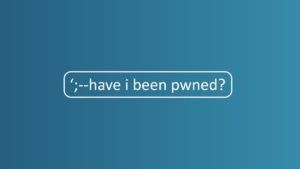When Microsoft Made The Windows As A Service Pivot
Comment Former Microsoft engineer Dave Plummer has weighed in on why Microsoft moved from paid upgrades to Windows as a Service. As ever, the old adage applies – when the product is free, the product is probably you…
Plummer, who among other things is responsible for Task Manager, stepped back in 2003, several years prior to the 2009 launch of Windows 7. That release is still fondly remembered by users looking glumly at hardware that is blocked from installing the latest Windows 11 update.
“Windows 7,” recalled Plummer on his Dave’s Garage YouTube channel, “was a resounding success.”
“Windows 8, which launched in 2012, was… a bit of a different story.”
Plummer’s understatement in the video belies the challenges faced by Microsoft a few short years following the debut of Windows 7. Calling Windows 8 “divisive” would be an understatement. Then, Apple opted to make version upgrades of its operating system free, and there were zero-cost Linux distributions, requiring ever less technical skill to be usable.
Microsoft was feeling the heat.
“The company faced multiple challenges,” recalled Plummer, “an aging but popular Windows 7, the failure of the Windows 8 strategy, declining PC sales, and a market where operating systems increasingly were free or tied to device purchases.”
The stage was set for a company pivot, starting with making Windows 10 a free upgrade. It coincided with the arrival of Satya Nadella as Microsoft CEO and a switch from a Windows-first philosophy to one where the cloud and customer engagement mattered more.
“Internally,” Plummer told subscribers, “this was framed as ‘moving to a Windows as a Service model’ instead of treating Windows as a product you sell once and then replace after a few years.”
Instead of charging $100 (or more) for an operating system upgrade, Windows 10 could be free for Windows 7, 8, and 8.1 users. Through encouragements that included ads, popups, and some stealthy downloads.
If a customer bought a new device, the OEM version was factored into the cost. But you could get an upgrade for free. “This,” said Plummer, “was a radical departure from the past.
“Microsoft was forgoing that revenue entirely.”
It was a huge success, even considering the small number of users who resolutely clung to their Windows 7 installations for as long as possible. In addition to ensuring that users stay up to date, thus improving the ecosystem’s overall health, it also introduced customers to subscription services such as OneDrive and Skype.
And then there was the telemetry.
“With Windows 10 deployed to a huge user base, Microsoft stood to gain something incredibly valuable in the modern tech industry: Data.
“Windows 10 was built from the ground up to extensively phone home with telemetry information.”
This was a good thing, yes? Microsoft could see what users were doing with Windows, correct issues, and make enhancements or fix what was broken. And of course, it was all anonymized, right? And who wouldn’t like a better user experience?
Not everyone. “The sheer scale of telemetry in a free OS [at least in early versions of Windows 10] made a lot of people uneasy,” recalled Plummer.
‘If you’re not paying for the product, you probably are the product’ is an adage frequently trotted out when it comes to free services, and Windows 10 was no exception. Plummer recalled, “Windows 10 introduced a new wave of built-in advertising and upsell mechanisms within the OS itself. Users began noticing things like suggested apps in the Start Menu, taskbar pop-ups nudging them to try Microsoft Edge,” and so on.
Sure, Microsoft wasn’t charging for Windows 10. But it was gently pushing users toward its paid services.
The veteran engineer recalled, “This was a significant shift from old versions of Windows that never had any advertising baked into them.”
The shift to Windows as a Service and the direction of users to subscription plans also smoothed the peaks and troughs in Microsoft’s revenue. Sure – the move did little to offset the decline in PC sales, but it did keep the cash rolling in.
It even helped deal with the piracy problem plaguing Microsoft’s operating system. Plummer recalled working on the first version of Windows activation, but noted that “by offering Windows 10 for free even to those with non-genuine copies … the company had a chance to convert pirates into legitimate users who might then buy apps or services in the Windows ecosystem.”
There’s no doubt that Windows 10 was a tremendous success for Microsoft and, according to Plummer, “righted the ship” after Windows 8.
“However,” the veteran engineer concluded, “Not everyone is happy with the status quo, and I count myself among them.
“Whether Windows is a monthly subscription or an annual license doesn’t really matter to me, but I don’t want telemetry and advertising in my pro versions of the retail license.
“I for one would gladly pay $10 or maybe even $20/month for a version of Windows Pro that included no telemetry or unnecessary telematics.”
Or perhaps it should be possible that, when paying for Windows as part of a device purchase, it should be possible to select a version that isn’t festooned with ads and plumbed for slurpage?
Plummer switches between MacOS, Windows, and Linux several times a day and called the difference “palpable.”
While some environments help him get his work done, he described Windows as “a tool that’s a bit of an adversary that helps monetize me just a little too often for my tastes…” ®
A considerable amount of time and effort goes into maintaining this website, creating backend automation and creating new features and content for you to make actionable intelligence decisions. Everyone that supports the site helps enable new functionality.
If you like the site, please support us on “Patreon” or “Buy Me A Coffee” using the buttons below
To keep up to date follow us on the below channels.


![[STORMOUS] - Ransomware Victim: www[.]visioninksltd[.]in 2 image](https://www.redpacketsecurity.com/wp-content/uploads/2024/09/image-300x300.png)

